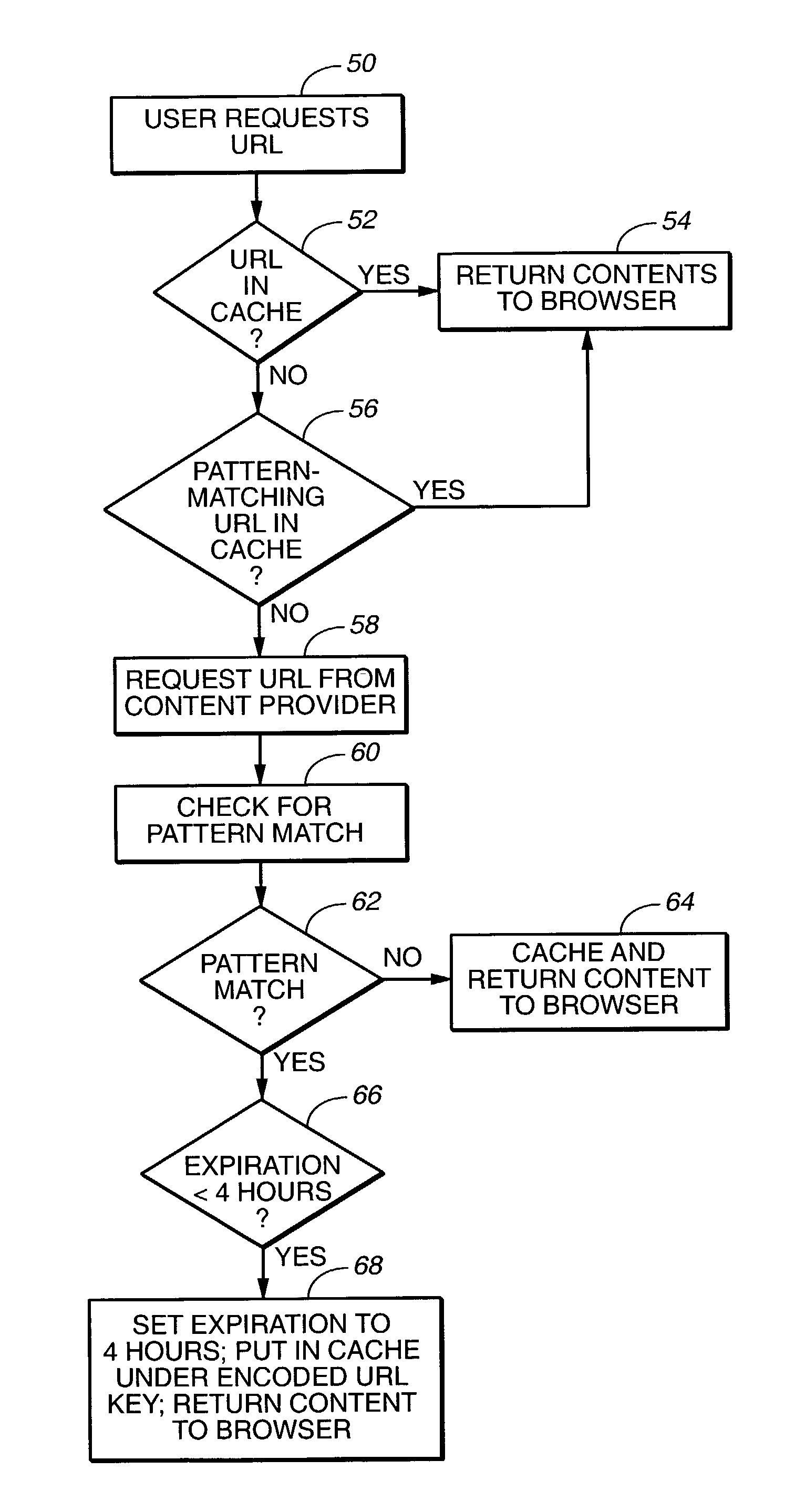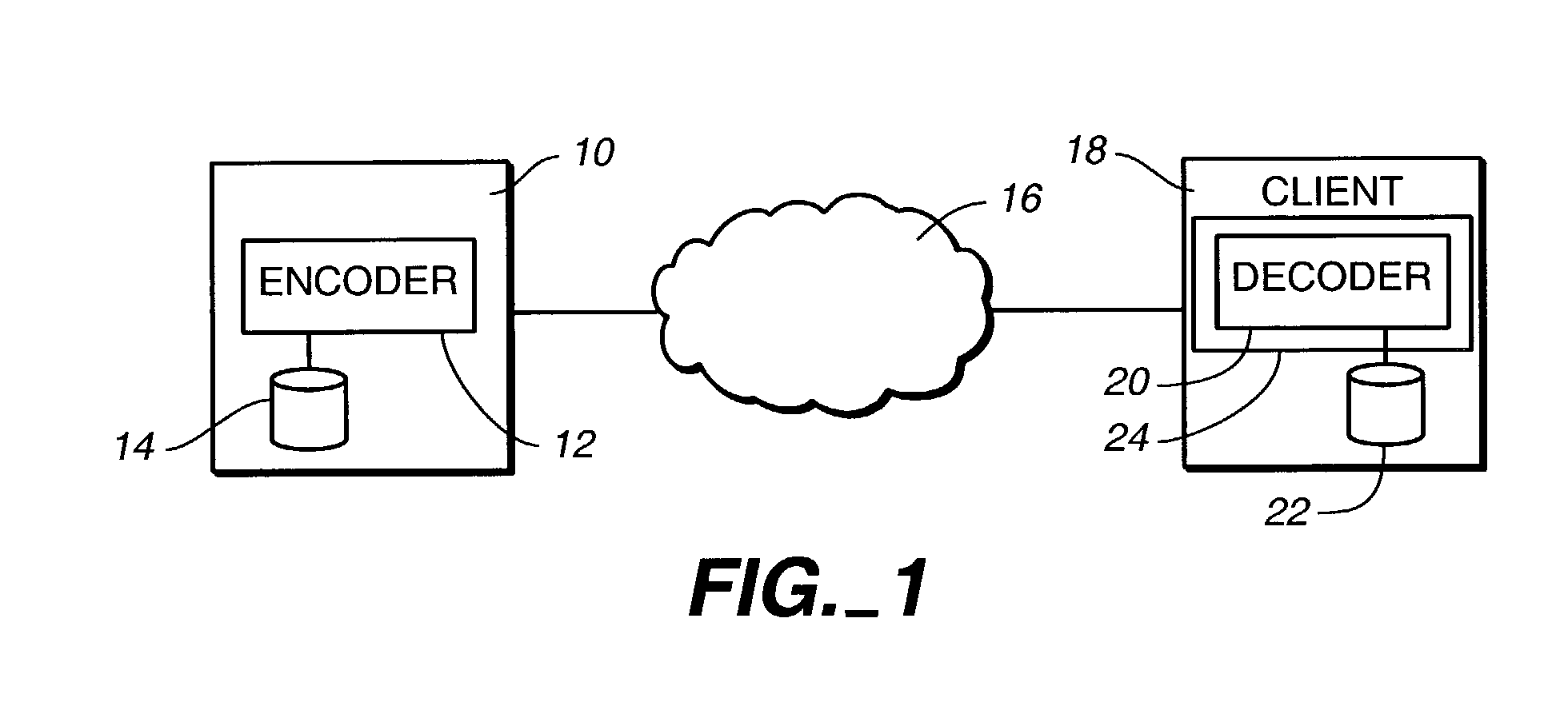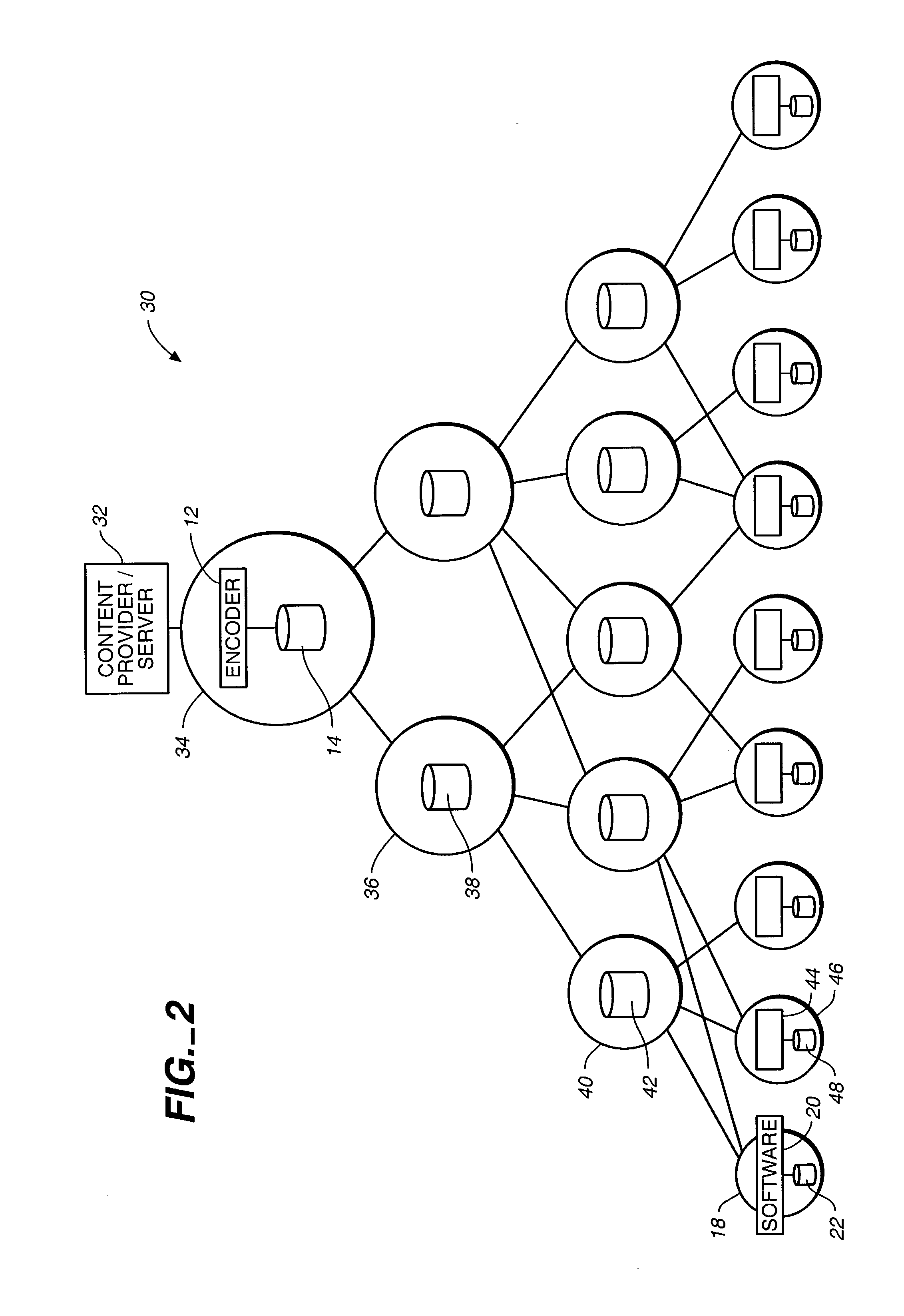Method for accelerating delivery of content in a computer network
a technology of computer network and content, applied in the field of accelerating the delivery of content in the computer network, can solve the problems of increased time required to fully render a requested web page, additional latency problems associated with fetching advertisements, and network congestion, so as to reduce network congestion and service latency, the effect of reducing latency
- Summary
- Abstract
- Description
- Claims
- Application Information
AI Technical Summary
Benefits of technology
Problems solved by technology
Method used
Image
Examples
Embodiment Construction
[0020]In the preferred embodiment of the invention, the communications network is a persistently-connected caching network featuring multiple hubs which are capable of caching material transmitted through the hub as the material is sent from either from a server or another caching hub in response to a client's request for the material. The network devices also employ a socket layer capable of combining multiple messages from different machines, threads, and / or processes into single TCP / IP packets to be relayed along message hubs in the persistent network. Due to the direct connection between dedicated socket pairs of network members, there is bi-directional asynchronous communication between the network members. Data communication may be further accelerated in this network by a data compression scheme in which requested data is recursively compressed into hash codes, or identifiers, by an encoder either at the content provider or at a proxy for the content provider; these hash codes...
PUM
 Login to View More
Login to View More Abstract
Description
Claims
Application Information
 Login to View More
Login to View More - R&D
- Intellectual Property
- Life Sciences
- Materials
- Tech Scout
- Unparalleled Data Quality
- Higher Quality Content
- 60% Fewer Hallucinations
Browse by: Latest US Patents, China's latest patents, Technical Efficacy Thesaurus, Application Domain, Technology Topic, Popular Technical Reports.
© 2025 PatSnap. All rights reserved.Legal|Privacy policy|Modern Slavery Act Transparency Statement|Sitemap|About US| Contact US: help@patsnap.com



